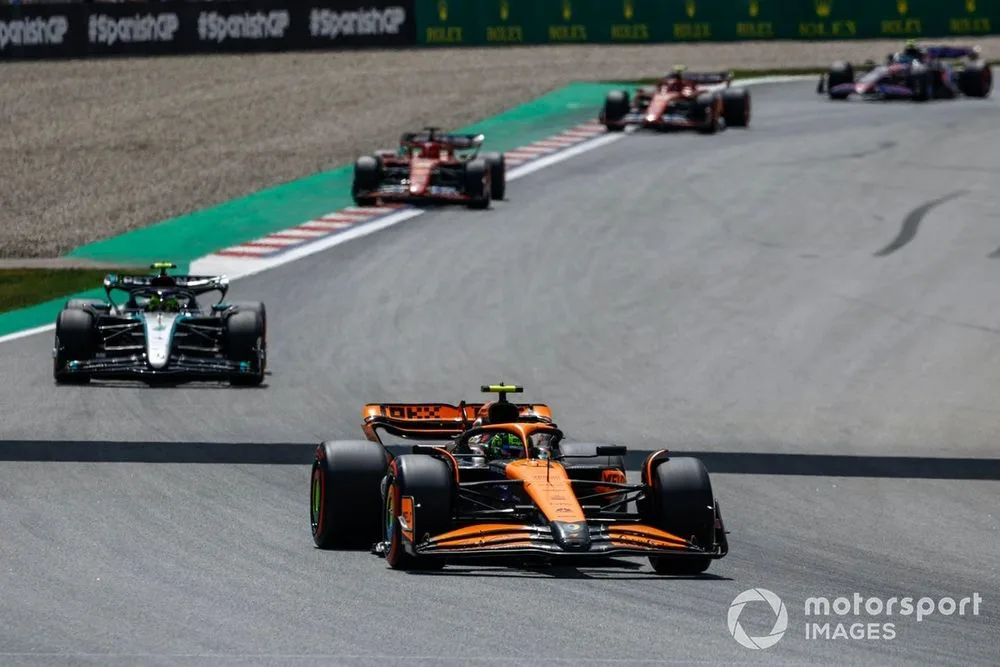While Lando Norris’s hopes of victory in Formula 1’s Spanish Grand Prix were effectively derailed by his start, there was equally a phase late on that proved just as critical.
With the McLaren driver having earned himself a tyre offset against Max Verstappen, the advantage of fresher rubber in the final stint offered him a chance to overhaul the Red Bull for the lead.
Norris duly put on a charge and managed to get himself just 2.2 seconds behind at the chequered flag, but there was a sense of regret afterwards about how he handled that final 19-lap stint on Pirelli’s soft rubber.
PLUS: The ruthless marker Norris laid down with his Verstappen squeeze at Barcelona
He was left pondering whether or not he should have stuck to his guns with a tyre trick that he and McLaren have got on top of this year.
This surrounds bringing in fresh rubber slowly after a stop, because it performs much better over the long haul, than if drivers gun it straight out of the pits.
Speaking after the race, Norris said: “It wasn’t the longest final stint, so I didn’t know if we were going to get to that time in the stint when I really start to catch.
“I think really, like the last three laps, the gaps were pretty big in terms of how much it was coming down. Yeah, it’s a hard one.
“I don’t know if maybe I pushed a bit too much in the beginning and struggled a little bit more at the end. It’s very difficult to judge these things.”
Lando Norris, McLaren MCL38, Lewis Hamilton, Mercedes F1 W15, Charles Leclerc, Ferrari SF-24
Photo by: Zak Mauger / Motorsport Images
What Norris is referring to is that, when he came out of the pits for the final dash to the flag, aware of the need to chase down a 7.696s gap to Verstappen, he elected to go on the attack.
His first flying lap was a 1m17.377s, and then two laps later he put in the fastest lap of the race – a 1m17.115s – as he began his hunt.
But, while pushing to the maximum like this may seem the obvious way to haul in the leader, F1 teams and drivers spend time and effort mastering the different approach that is often better.
PLUS: Why it wasn’t just Russell’s start that cost Norris the Spanish GP victory
It is one that involves actually taking it easier straight out of the pits.
Instead, drivers work to slowly bring their rubber in over a couple of laps – which ultimately leaves them with better stabilised pressures and temperatures that deliver better performance for the…
Click Here to Read the Full Original Article at Autosport.com – Formula 1 – Stories…

